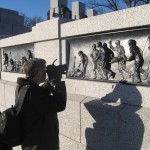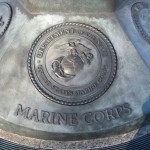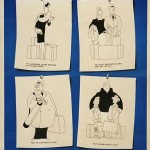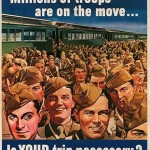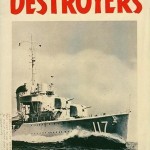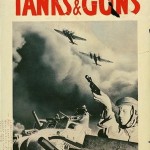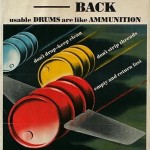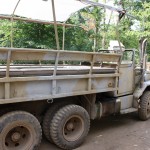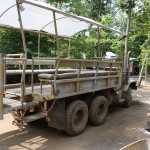 This is the second post in a series that highlights local men killed in World War II. The monument pix come from the Memorial at Mt. Olivet cemetery in Frederick, MD. The text comes from period news articles researched and posted online by the unnamed Frederick County Veterans Researcher. They are obituary-style and usually include a few follow up stories for each name.
This is the second post in a series that highlights local men killed in World War II. The monument pix come from the Memorial at Mt. Olivet cemetery in Frederick, MD. The text comes from period news articles researched and posted online by the unnamed Frederick County Veterans Researcher. They are obituary-style and usually include a few follow up stories for each name.
This post is on Allan C. McBride, who was from the Middletown valley, and was awarded the Distinguished Service Medal for his actions in the Philippines. The March 26, 1945 entry is most interesting and yet entirely random.
The News, November 15, 1942
Distinguished Service Medal Awarded to GENERAL ALLAN C. MCBRIDE Wife Receives U.S. Honor for Officer Prisoner of Japs Since Fall of Bataan
The War Department has awarded the Distinguished Service Medal to Brig. General Allan C. McBride, Frederick native, who is now believed to be a prisoner of the Japanese, for the exceptional services which he rendered in the Philippines.
The Medal was presented to Mrs. McBride at ceremonies this week in the offices of General Lesley J. McNair, in Washington.
The citation disclosed that General McBride supervised the hazardous evacuation from Bataan Peninsula. Apparently he was taken prisoner during or shortly after the evacuation was under way. General McBride was chief of staff in the Philippines at the time of the Japanese invasion and the award was made for exceptionally meritorious services to the government, according to the citation read by General McNair.
On Bataan, according to the citation, General McBride supervised operations behind the lines and also the evacuation from the peninsula “largely with improvised means and under continuous aerial bombardment.”
Attending the ceremonies with Mrs. McBride, who lives at 2133 Tunlaw road, N. W. Washington, were a son, Lieut. Andrew C. McBride, Coast Artillery, and a daughter, Miss Susanne McBride.
There has been no report that any direct word has been received from General McBride this year. The War Department informed Mrs. McBride in April that the former Frederick resident was a prisoner of war and believed to be in an internment camp. After the fall of Bataan, he had at first been reported as either killed or captured.
Mrs. McBride received a letter from her husband April 1 which was mailled December 21, a short time after the attack of Manila.
General McBride is a well known former Frederick resident and one of the top ranking officers from this section of the war. A son of the late Sheriff A. C. McBride, he is a World War I veteran and field artillery specialist.
During the first war he commanded a battalion of Field Artillery in France and later served in Germany. He was assigned to Army headquarters in the Philippines as plans and training officer February 20, 1941.
His sister, Mrs. M. Staley Shafer, resides on West Patrick street. A brother, Edgar H. McBride, well known attorney and banker, died some years ago.
The News, March 15, 1944
Brig. General Allan C. McBride, Frederick native who has been a prisoner of the Japanese since the fall of Corregidor nearly two years ago, may have been moved from his prison camp on the island of Formosa, relatives here believe.
Their information came from the general’s wife, who resides in Washington, and there was no indication as to where Gen. McBride might have been taken, if he was moved. The belief resulted, it was said, from reports that efforts to contact the general at Formosa, evidently through the Red Cross, had been unsuccessful.
The last word received by Mrs. McBride from her husband was a message apparently in the form of a Christmas card, which arrived late in January. It said only that he was well. Last year, he reported in a message to Mrs. McBride that he was working in a garden for exercise.
General McBride, on General MacArthur’s staff in the Philippines, was awarded the Distinguished Service Medal for his exceptionally meritorious services.
Chief of staff of the American forces on Bataan, he supervised the evacuation from the peninsula “largely with improvised means and under continuous aerial bombardment,” according to the citation.
The News, March 26, 1945
In faraway and primitive Assam, India, Cpl. L. Sheridan Barber, this city, picked up a January 18 copy of the service paper, “CBI Roundup” and ran across a front page item from “Frederick, Md,” conveying news of the death of Brig. Gen. Allan C. McBride in a Japanese prison camp, under the heading of “Hero Dies.” Cpl. Barber, who is with an air cargo resupply squadron of the Air Corps, sent a copy of this paper home.
The News, December 22, 1947
The body of Brig. Gen. Allan C. McBride, native of Middletown Valley, who died in a Japanese prisoner of war camp on Formosa, will be repatriated at an unannounced date for interment in Mt. Olivet Cemetery War Memorial ground, his widow, Mrs. Avis H. McBride, disclosed Sunday night.
Gen. McBride, died May 9, 1944 at Shirakawa Prison Camp, Formosa after his capture by Japances forces at Corregidor, P. I., where he was commander of United States forces when the beleaguered Philippines bastion fell. Mrs. McBride, at her home in Washington last night said, “the general’s body would have been left where he fell, according to his and wish except that no American war cemeteries are being set up in Japanese territory.”
His widow said Gen. McBride had often talked with her about his passing and expressed this philosophy. “I don’t want any fuss made over my burial. After life has departed the body only dust remains. If I fall in the field as I expect perhaps to do, I just want to be wrapped in an Army blanket and be buried right there in a plain pine coffin.”
Mrs. McBride said she felt his wishes had been fulfilled when he was buried in Formosa and she and his children had no intention of having the body brought home until a month ago when the Quartermaster Department of the Army notified her that by an Act of Congress the General’s remains had been removed with the bodies of all other American war dead from Formosa; and now are resting in a mausoleum in Hawaii.
She said Gen. McBride had never served a tour of duty in Hawaii, that the family had few if any friends or acquaintances there, and because no cemeteries were available in Japan whereby his burial request might be fulfilled, the family has recently decided to have re-interment made in Frederick County, “where Mac, at last will lie at the final rest among his friends and fellow countians.”
She said she has not yet been advised by the War Department when Gen. McBride’s body will be brought here.
The News, May 26, 1948
In keeping with his oft expressed wishes, Brig. Gen. Allan C. McBride was reinterred with simple ceremonies in Mount Olivet cemetery Tuesday afternoon.
With his widow, Mrs. Avis H. McBride, and several other close relatives in attendance, the body of the General was buried in the War Memorial section of the cemetery.
Services were conducted in Mt. Olivet chapel at 2 o’clock by Rev. Dr. Edwin H. Sponseller. General Charles Gearhardt, Second Army commander, Fort Meade, represented the Army.
Pallbearers were: Col. Frederick C. Rogers, G. William Trout, Philip Wertheimer, Guy Anders, Ernest Helfenstein, Jr., and Melvin M. Seeger. C. E. Cline and Son, funeral directors, had charge of arrangements. In the family group with the widow was their youngest daughter, Mrs. Suzanne Farnsworth, and her husband, and Mrs. Carrie E. Shafer, this city, a sister of the deceased.
Mrs. McBride previously said the General, who died in a Japanese prison camp after his capture in the fall of Corregidor, always said: “I don’t want any fuss made over my burial. After has departed the body only dust remains. If I fall in the field as I expect perhaps to do, I just want to be wrapped in an Army blanket and be buried right there in a plain pine coffin.”
The widow said that she thought his wishes had been fulfilled when he was buried in Formosa and she and her children had no intention to return the body for burial until they learned that the body had been removed to a mausoleum in Hawaii.
She added that the General had never served a tour of duty in Hawaii and that the family had few friends or acquaintances there. In view of the fact that no burial ground was available in Japan, she said, the family decided to have his remains brought here to rest “where Mac at least will lie in final rest among his friends and fellow countians.”
The News, no date, but found in the 20 years and 50 years ago listing
Major General George Parker, who had been held in the same Shirakawa Japanese prison camp with Brig. Gen. Allan C. McBride of Middletown Valley, Frederick County, reported that Gen. McBride had died of starvation and not “heart failure”as was reported by the Japanese.
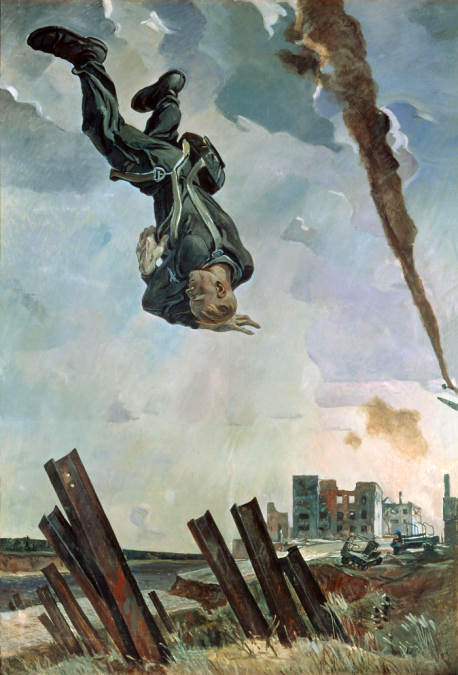 Browsing around the internet this afternoon, I came across a rather stirring set of paintings based on the Russian perspective in WWII. I haven’t looked at a collection like this in some time that is at once beautiful, awful, heroic, tragic, bright, dark all in one. The set is certainly worth a look, linked here.
Browsing around the internet this afternoon, I came across a rather stirring set of paintings based on the Russian perspective in WWII. I haven’t looked at a collection like this in some time that is at once beautiful, awful, heroic, tragic, bright, dark all in one. The set is certainly worth a look, linked here.
